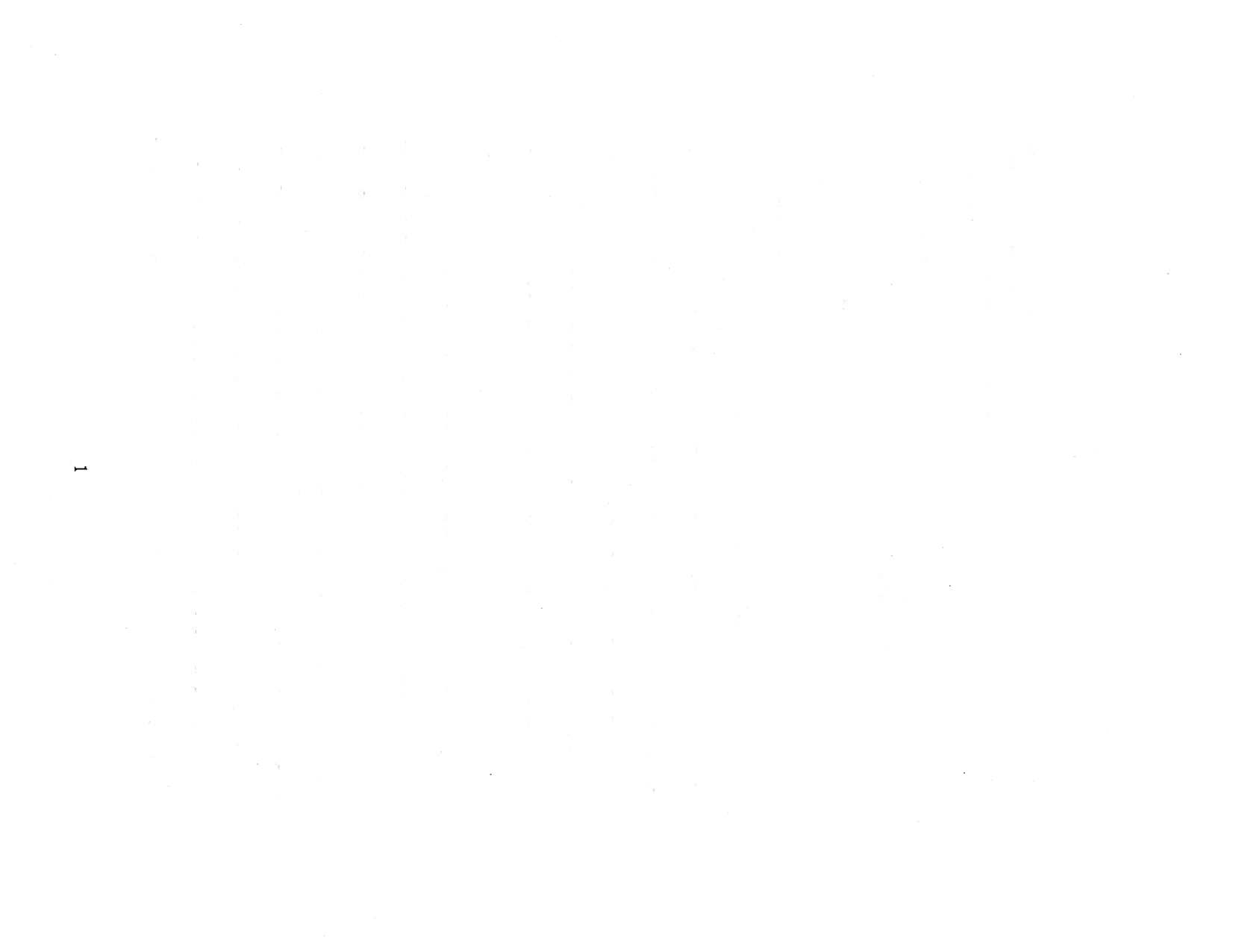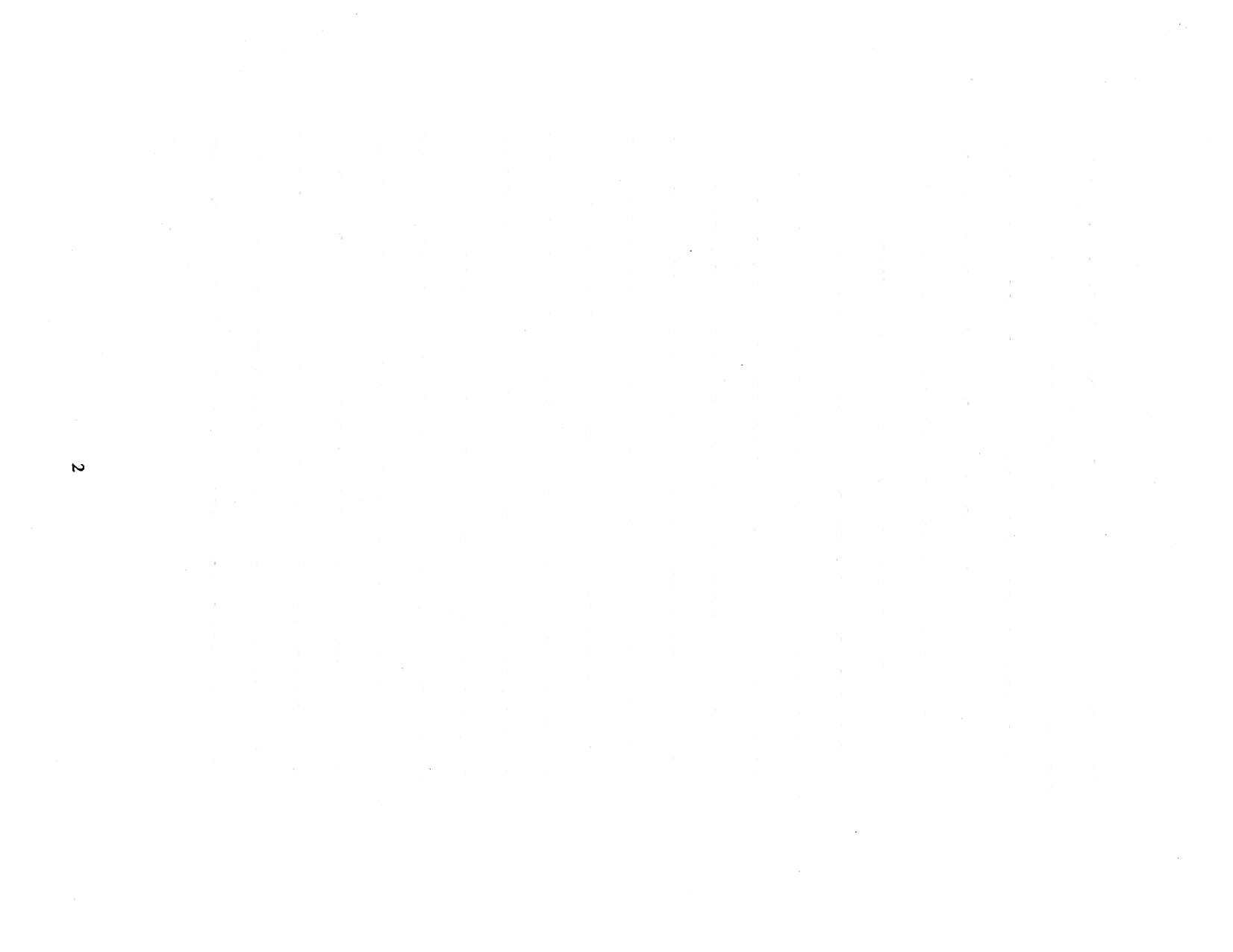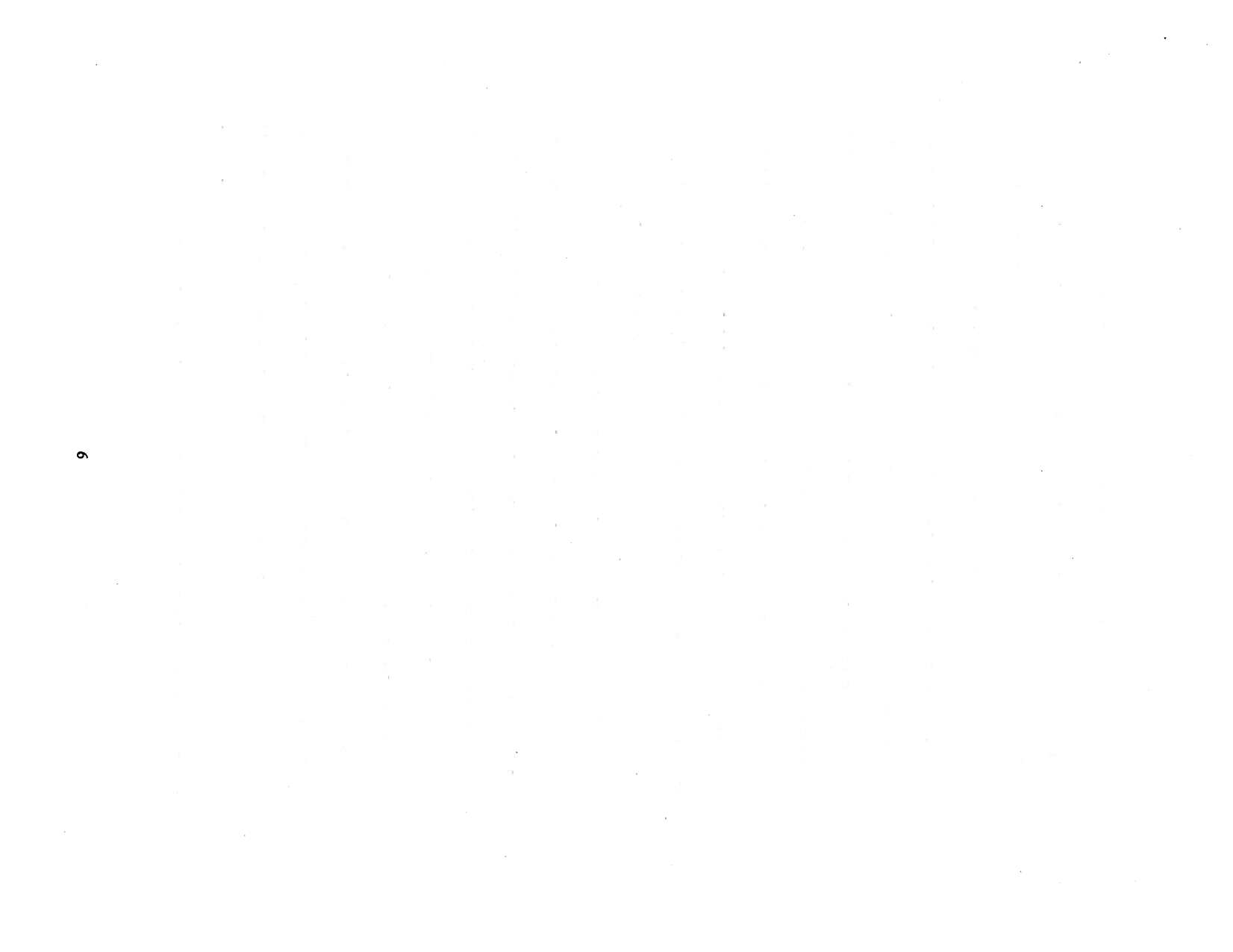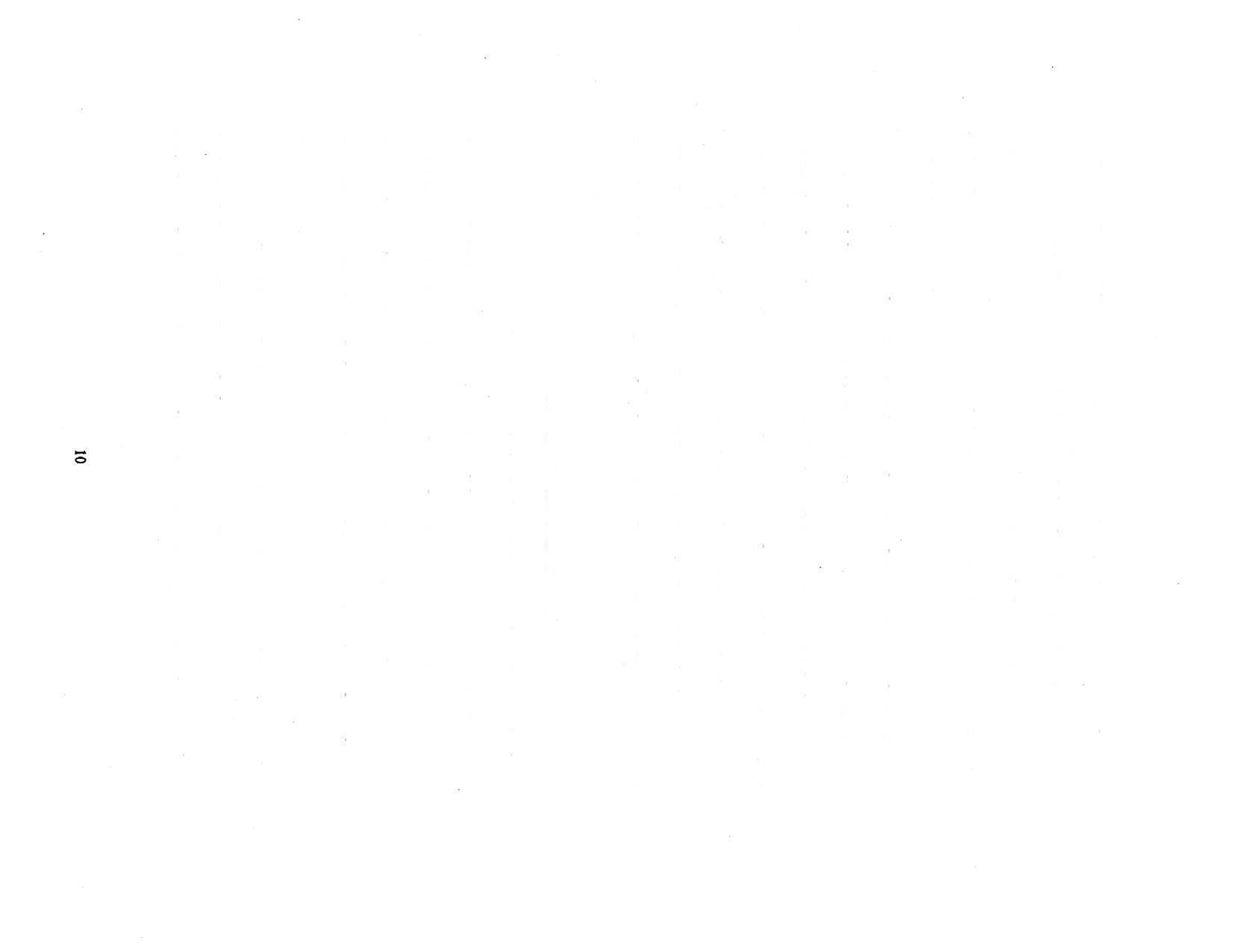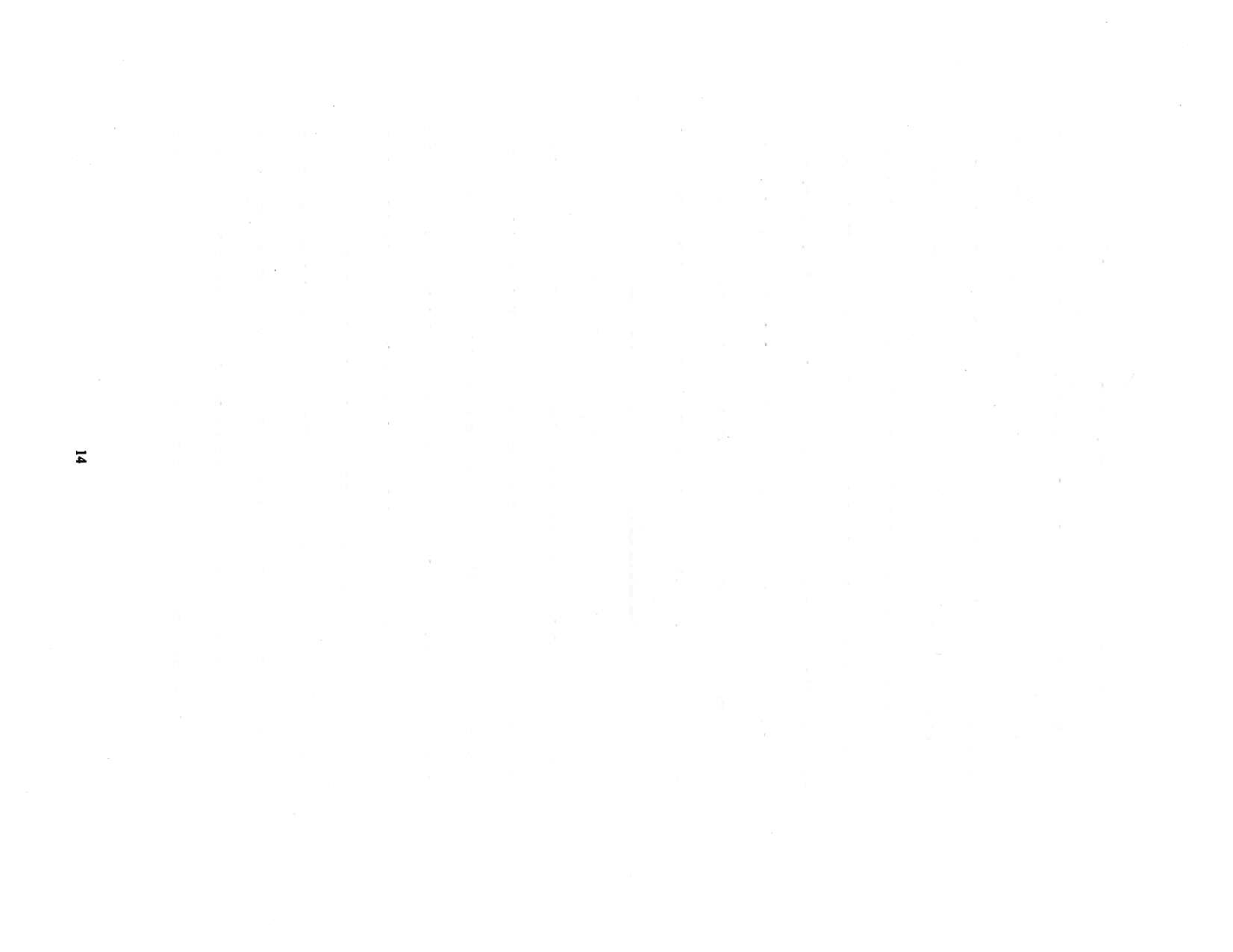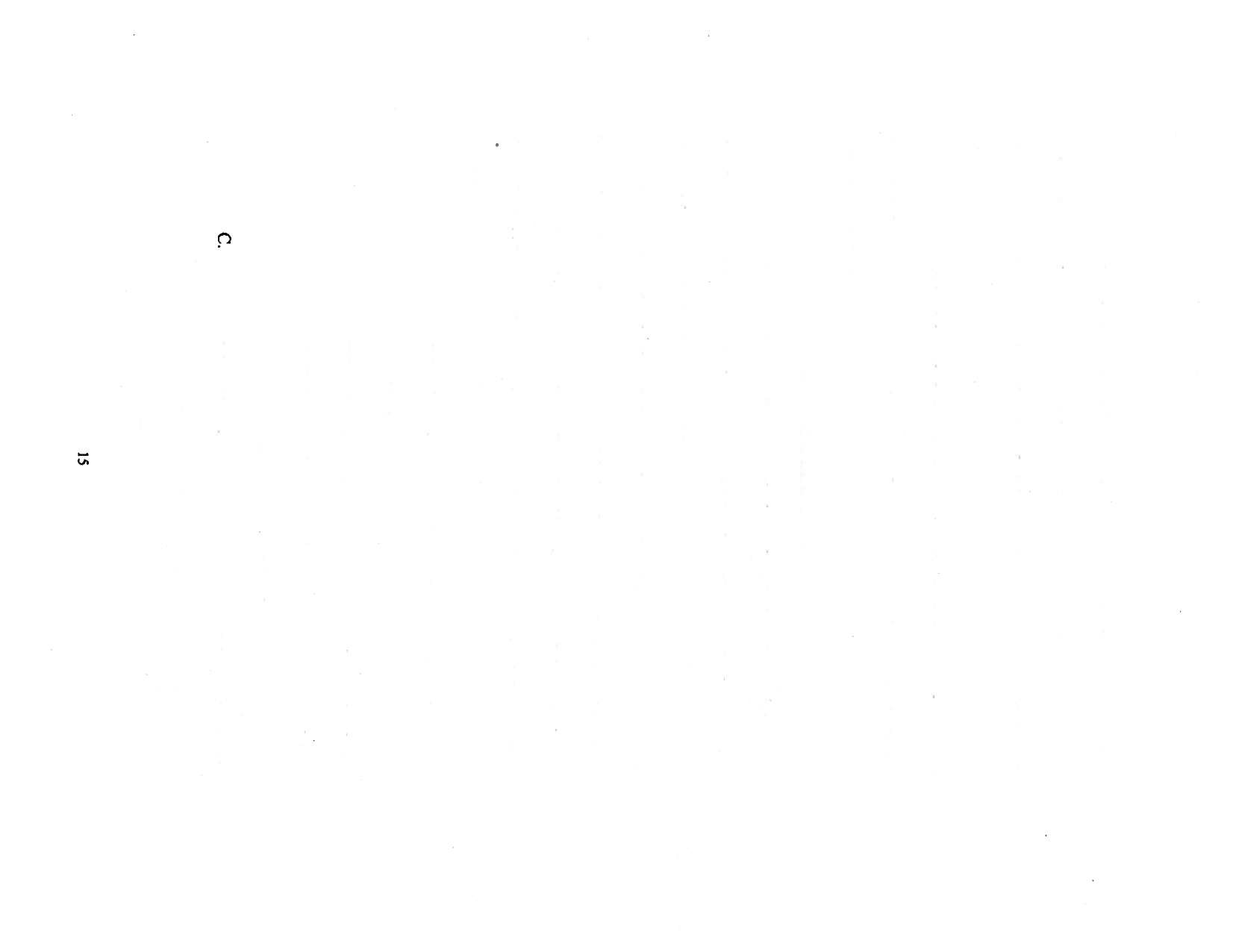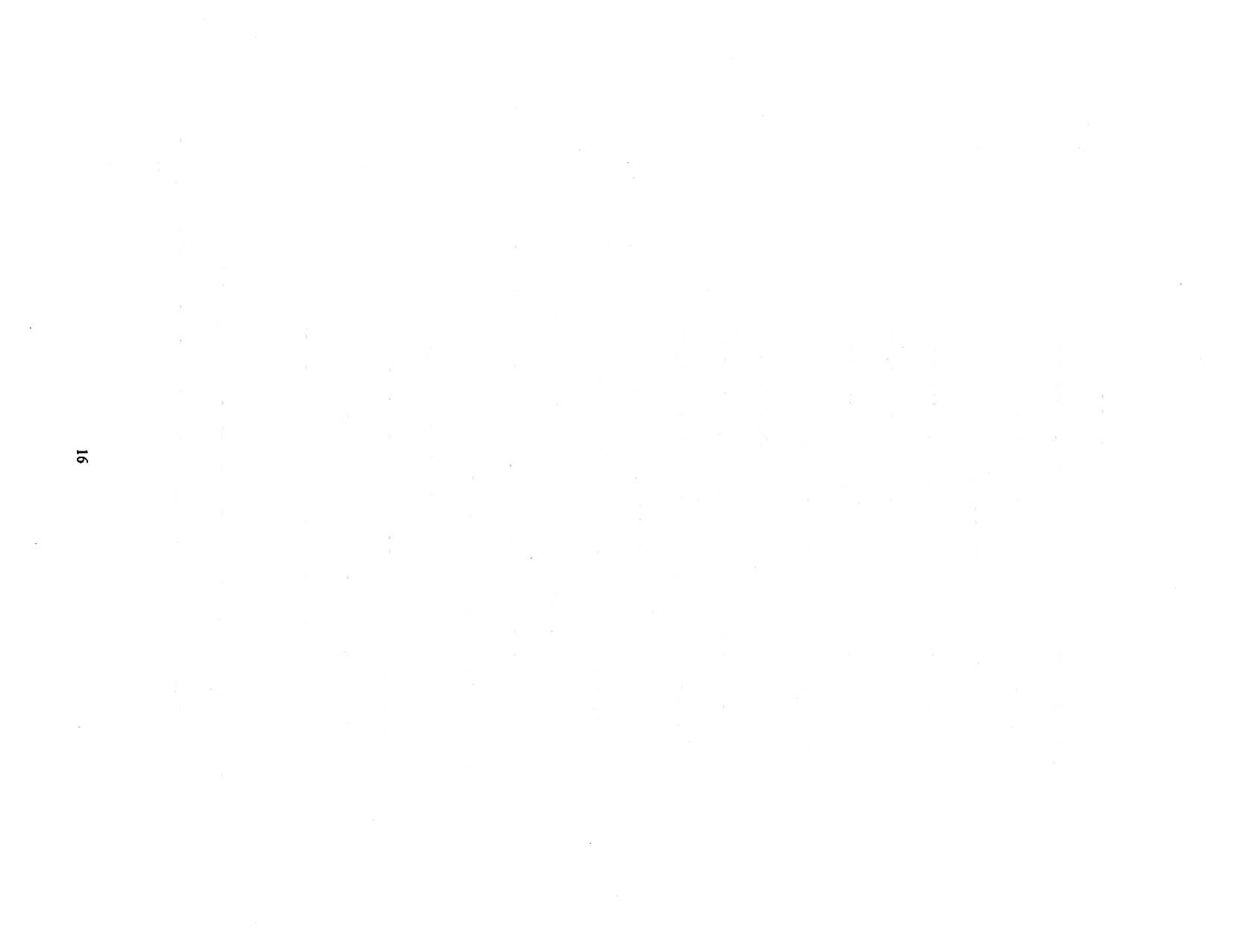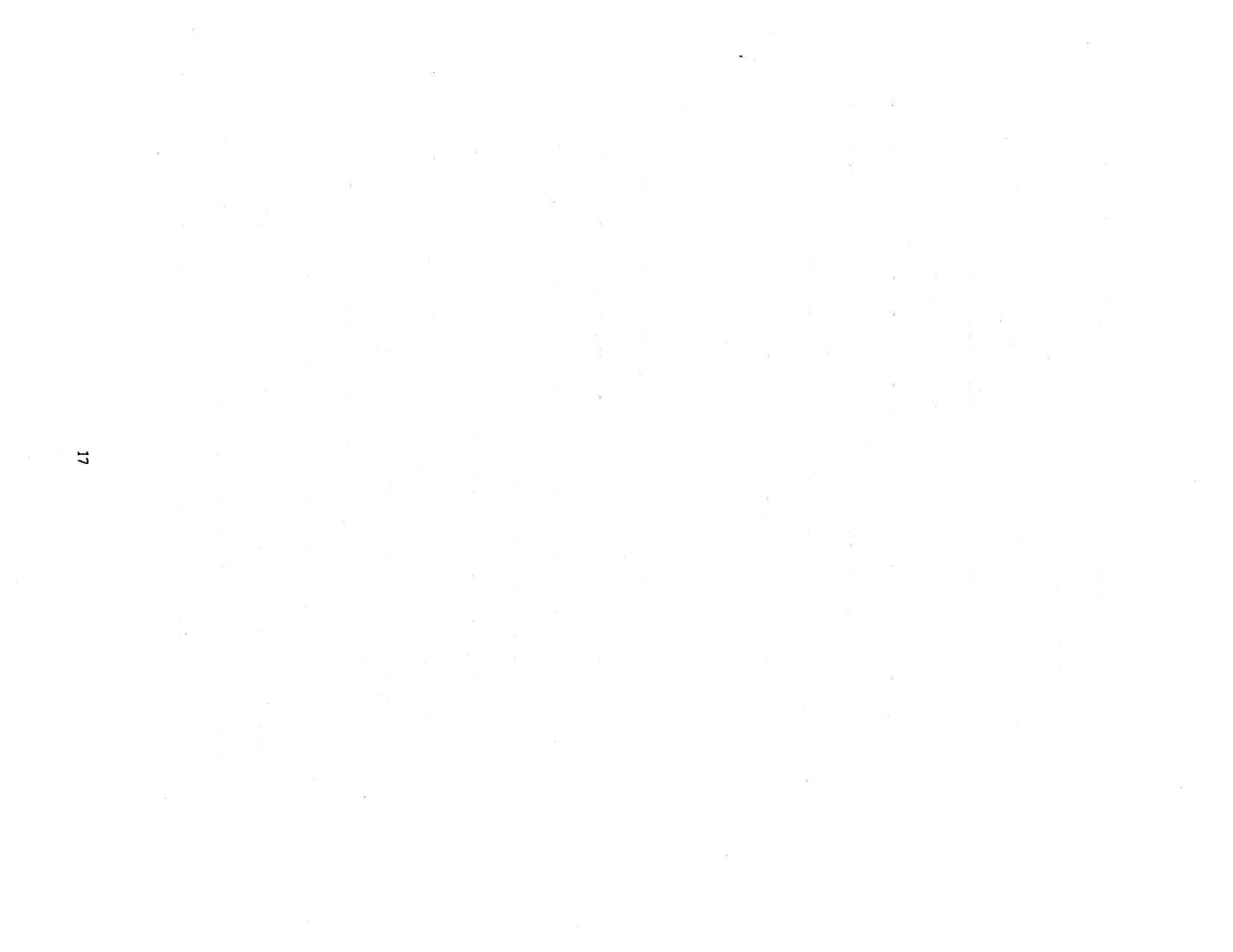Electronic
Filing
- Received,
Clerk’s
Office,
November
17,
2008
BEFORE
TUE POLLUTION CONTROL
BOARD
OF
THE
STATE
OF
ILLINOIS
AMEREN
ENERGY
GENERATING
)
COMPANY,
AMERENENERGY
RESOURCES
GENRATING
COMPANY,
)
AN])
ELECTRIC
ENERGY,
INC.,
)
)
Petitioners,
)
)
PCB 09-02
1
V.
)
(Variance-Air)
)
ILLINOIS
ENVRIONMENTAL
PROTECTION AGENCY,
)
)
Respondent.
)
NOTICE
John Then-iault,
Assistant
Clerk
Bradley
Halloran,
Hearing
Officer
Illinois
Pollution
Control
Board
Illinois
Pollution
Control
Board
James
R.
Thompson
Center
James
R. Thompson
Center
100
West
Randolph
Street
100
West
Randolph
Street
Suite
11-500
Suite
11-500
Chicago,
IL 60601
Chicago,
IL 60601
Renee
Cipriano
Kathleen
Bassi
Amy
Mtoniolli
SchiffHardin, LLP
6600 Sears
Tower
233 South
Wacker
Drive
Chicago,
IL 60606
PLEASE
TAKE
NOTICE
that
I
have
today
filed
with
the office
of
the Clerk
of the
Pollution
Control
Board
an APPEARANCE,
MOTION
TO
WA1VE
NOTICE
REQUIREMENT,
and
RECOMMENDATION,
copies
of
which
are herewith
served
upon
you.
Respectliilly
submitted,
ILLINOIS
ENVIRONMENTAL
PROTECTION
AGENCY,
IJ
Managing
Attorney
Illinois
Environmental
Protection
Agency
Division
of Legal
Counsel
1021
North
Grand Avenue,
East
P.O.
Box
19276
Springfield,
Illinois
62794-9276
217.782.5544
217.782.9143
(TDD)
Dated: November
17,
2008
Electronic Filing
-
Received, Clerk’s
Office,
November 17,
2008
BEFORE
THE
ILLINOIS
POLLUTION
CONTROL
BOARD
AMEREN
ENERGY GENERATING
)
COMPANY,
AMERENENERGY
)
RESOURCES GENRATING
COMPANY,
)
AND
ELECTRIC ENERGY,
INC.,
)
)
Petitioners,
)
)
PCB
09-021
y.
)
(Variance-Air)
)
ILLINOIS ENVRIONMENTAL
)
PROTECTION AGENCY,
)
)
Respondent
)
APPEARANCE
The undersigned
hereby
enters
his Appearance
on
behalf
of
the Illinois
Environmental
Protection
Agency.
ILLINOIS
ENVIRONMENTAL
PROTECTION
AGENCY
By:___
ent
E.
Mohr
Jr.
Assistant
Counsel
Division
of
Legal
Counsel
DATED:
1021
North
Grand
Avenue
East
P.O.
Box
19276
Springfield,
Illinois
62794-9276
(217)782-5544
(217)
782-9143
(TDD)
THIS
FILING
IS
SUBMITTED
ON
RECYCLED
PAPER
Electronic
Filing
-
Received,
Clerk’s
Office, November
17,
2008
BEFORE
THE
ILLINOIS POLLUTION
CONTROL BOARD
AMEREN ENERGY
GENERATING
)
COMPANY,
AMERENENERGY
)
RESOURCES
GENRATING
COMPANY,
)
AND
ELECTRIC
ENERGY,
INC.,
)
)
Petitioners,
)
)
PCB 09-021
v.
)
(Variance-Air)
)
ILLINOIS ENVRIONMENTAL
)
PROTECTION
AGENCY,
)
)
Respondent.
)
MOTION
TO
WAIVE
NOTICE
REQUIREMENT
NOW
COMES
the illinois
Environmental
Protection
Agency
(“Illinois
EPA”),
by
one
of
its
attorneys
and,
pursuant
to
35
Ill.
Adm.
Code
101.500, 101.502
and
102.402,
moves
that the
Illinois
Pollution
Control
Board
(“Board”)
or
its
assigned
Hearing
Officer
waive
the
14
day
publication
of
notice
requirement
as
set
forth
in
Section
104.214(a)
of
the
Board’s
procedural
rules
(35
Ill.
Adm.
Code
104.214(a)).
In
support
of its
Motion,
the
illinois
EPA
respectfiully
states
as
follows:
1.
On October
1,
2008,
Ameren
Energy
Generating
Company,
AmerenEnergy
Resources
Generating
Company,
and
Electric
Energy,
inc. (collectively,
“Ameren” or
“Petitioners”), filed
a
Petition
for
Variance
with
the
Board.
2.
Pursuant
to Section
104.214(a)
of the
Board’s
procedural
rules,
within
14
days
after
a
petition
for
variance
is filed,
the
Illinois
EPA
must
publish
a single
notice
of such
petition
in
a
newspaper of general
circulation
in
the county
where
the
facility
or
pollution
source
is
located.
That
section
also
incorporates
the
same
publication
of
notice
requirement
as
founding
Section
37(a)
of
the
Environmental
Protection
Act (“Act”)
(415
ILCS
5/37(a)),
though
the
Act’s
1
Electronic
Filing
- Received,
Clerk’s Office,
November
17,
2008
corresponding
language does
not specify a
time by
which
such
publication must
be
completed.
3.
The
Illinois EPA
recently
filed a
Certification
of
Publication
which documented
that the notice of
Ameren’s
petition
was published in
seven
different
newspapers,
the first
appearing on October
27, 2008,
and
the last on October
30,
2008.
4.
The Illinois EPA
therefore
was
late
in meeting the 14 day
requirement
for
publication
by
between
13 and
16
days, depending
on the affected
newspaper.
5.
The illinois EPA, and
specifically
the undersigned
attorney,
regret the delay in
completing
the
publication
of
notice as required
in Section 104.2 14(a).
Though
the delay is
the
fault of the undersigned
attorney,
there are
at least
two factors which
contributed
to the delay.
First, the
undersigned attorney
is
currently
assisting
another
state
agency in their legal
department,
and
therefore
the press
of
“normal”
business has
been
increased.
Second, the
Petitioners
served the notice
of
the
petition upon
two specific staff attorneys
at the Illinois
EPA;
unfortunately, one
of those
attorneys
has
been out of the office
since
September on maternity
leave, and the other
attorney has
also been
out of the office for
much
of
early
October. Thus,
it
took several
additional days for
the
Petition to be properly
routed
to the undersigned
attorney.
6.
These
factors
contributed
to the delay in
the
publication
of notice,
though
the
responsibility
clearly remains
upon the Illinois EPA
and
the
undersigned
attorney. The 14 day
deadline is
imposed by Board rule,
not by statute,
and
it
should
be noted
that
Section 3
7(a)
of the
Act
does not
specify
any
particular time period
or reflect any
sense
of urgency
related
to
the
requirement
of
publication.
Further,
in this case
the
notices
(in
different
newspapers, owing
to
different
facilities of the
Ameren
being
affected)
were ultimately
published,
approximately
two
weeks
longer
than
otherwise allowed,
though by
the
end
of the same calendar
month
of
the
Petition’s
filing.
2
Electronic Filing - Received,
Clerk’s
Office, November
17, 2008
7.
Due to the relatively short period of time by which
the
publication
of notice went
beyond
the time allowed,
and
the fact that no prejudice will befall any party
to
this action or any
entity or person, the minor delay experienced in this situation
may be allowed.
WHEREFORE, for the reasons set forth herein,
the
Illinois EPA
respectfUlly requests
that
the Board or its
assigned Hearing
Officer
grant this
motion
to
waive
the
14
day deadline
by
which to notice of the Petition
must be published in a newspaper of general
circulation in the
counties in which the affected
facilities are located.
RespectfUlly
submitted,
ILLINOIS
ENVIRONMENTAL PROTECTION
AGENCY,
Respondent
.:Icim
Managing Attorney
Illinois Environmental
Protection
Agency
Division of Legal
Counsel
1021 North
Grand
Avenue,
East
P.O. Box 19276
Springfield,
Illinois 62794-9276
217.782.5544
217.782.9143 (TDD)
217.782.9807
(Fax)
Dated: November 17,
2008
3
Electronic
Filing
-
Received,
Clerk’s Office, November
17,
2008
BEFORE
THE
ILLINOIS POLLUTION
CONTROL
BOARD
AMEREN
ENERGY
GENERATING
)
COMPANY,
AMERENENERGY
)
RESOURCES
GENRATING
COMPANY,
)
AND
ELECTRIC
ENERGY,
INC.,
)
)
Petitioners,
)
)
PCB
09-021
v.
)
(Variance-Air)
)
ILLINOIS ENVRIONMENTAL
)
PROTECTION
AGENCY,
)
)
Respondent
)
RECOMMENDATION
NOW
COMES
the
illinois
Environmental
Protection
Agency
(“Illinois
EPA”)
by
its
attorneys, John
J.
Kim
and
Kent
B.
Mohr
Jr.,
in
response
to
the
Petition
for
Variance
of
AMEREN
GENERATING
COMPANY,
AMERENENERGY
RESOURCES
GENERATING
COMPANY,
and
ELECTRIC
ENERGY,
INC.
(collectively,
“Ameren”
or
“Petitioners”),
from
certain
requirements
of
the
Multi-Pollutant
Standard
(“MPS”),
35
ill.
Adm.
Code
225.233. Pursuant
to
Section
37(á)
of
the flhinois
Environmental
Protection
Act
(“Act”)
[415
ILCS
5/37(a)
(2008)]
and
35
Iii.
Adm.
Code
104.2
16,
the
illinois
EPA
recommends
that
the
Illinois
Pollution
Control
Board
(“Board”) deny
Petitioners’
request
for
variance
as
proposed,
or
in the
alternative,
grant
the
Petition
subject
to the
terms
and
conditions contained
herein,
In support
of
its
recommendation,
the
Illinois
EPA
states
as
follows.
I.
INTRODUCTION
1.
On
October
1, 2008,
Petitioners
filed
a
Petition
for Variance
from
a
provision
of
the
MPS,
35
III.
Adm.
Code
225.233,
for
a
period
beginning
January
1, 2013,
through
Electronic
Filing - Received,
Clerk’s
Office, November
17,
2008
December 31, 2014.
2.
Petitioners specifically
seek
a
variance
from
one
of the
components
of
the
MPS,
Section 225.223(e)(2)(A),
on a system-wide
basis,
rather than on
a power
station-by-
power
station
basis. Section
225.233(e)(2)(A)
provides
that
MPS
sources must
comply with
a
sulfur
dioxide
(“SO
2
”)
emission
rate
of
0.33
pounds
per
million
British
thermal
units
(“lb/rmnBtu”),
or
44% of
its
baseline,
whichever
is
more
stringent.
3.
Petitioners own
and operate seven coal-fired
power
plants in the
State of
Illinois, which
are the subject
of
this Petition, for the
generation of electricity
in
numerous
locations
in
downstate illinois.
These
plants include the
Coffeen
Power
Station
located
in
Montgomery
County,
the
Duck
Creek Power
Station
located
in Fulton County,
the
E.D
Edwards Power
Station located
in Peoria
County, the
Joppa
Power
Station
located
in
Massac
County, the
Hutsonville
Power
Station located
in Crawford
County, the Meredosia
Power
Station
located
in Morgan
County,
and the Newton
Power
Station
located in Jasper
County.
Currently,
all of these counties
are designated
attainment
for all pollutants. Although,
USEPA
has
proposed
to
designate
Massac County
as nonattainment
for the daily 2006
fine
particulate
matter (“PM2.5”)
standard
based on 2005
through
2007
air quality data.
4.
Pursuant
to Section
104.214 of the Board’s
procedural
rules, the illinois EPA
must
provide public
notice
of
any
petition for variance
within 14
days afier filing of
the
petition. See,
35
Ill. Adm.
Code
104.214.
Section 104.214(a)
provides
that “the Agency
must publish a
single notice of such
petition
in
a
newspaper
of
general
circulation in the
county
where the
facility
or
pollution
source
is located.” See
also,
415
ILCS
5/37(a)
(2008).
Section
104.214(b)
requires
the illinois
EPA to
serve
written
notice
of
a
petition
on
the
County
State’s
Attorney,
the Chairman
of the
County
Board, each
member of the
General
2
Electronic Filing
- Received,
Clerk’s Office,
November 17,
2008
Assembly
from
the
legislative
district
affected,
and any
person
in the
county
who
has
in
writing
requested
notice
of
variance
petitions.
5.
Regretfully,
the
Illinois
EPA
was
not
able
to
meet
the 14
day
period
specified
in Section
104.2
14(a)
of
the
Board’s
procedural
rules
because
the Petition
was
sewed
on
two
attorneys
at
the
Illinois
EPA
who
were
out
of
the office,
rather
than
on the
Illinois
EPA
Chief
Legal
Counsel,
which
ultimately
resulted
in
exceeding
the
applicable 14
day
period.
This
situation
is
also
addressed
in a
separate
motion
filed
concurrently
with
this
Recommendation.
As
a
result,
the
IllInois
EPA
has
not
yet
received
any
written
comments,
objections
or
requests
for
hearing.
Should
any
public
conunents
be
received
before
the
end
of
the
comment
period,
the Illinois
EPA
will
file
an
amendment
to its
Recommendation
addressing
any
necessary
issues.
6.
Pursuant
to
the
Board’s
procedural
rules,
“[w]ithin
21
days
after
the
publication of
notice,
the Agency
must
file
with
the
Board
a
certification
of
publication
that
states
the date
on
which
the
notice
was
published
and
must
attach
a
copy
of the
published
notice.”
See,
35
Ill.
Adm.
Code
104.214(1).
The
Illinois
EPA
has
filed
a certification
of
publication
within
this
timeframe.
7.
The
Illinois
EPA
is
required
to
make
a
recommendation
to
the
Board
on
the
disposition
of
a petition
for variance
within
forty-five
(45)
days
of
filing
of the
petition
or
any
amendment
thereto
or
thirty
(30)
days
before
a scheduled
hearing
pursuant
to
35 111.
Adm.
Code
104.216.
8.
Since
the
filing
of the
Petition
for Variance,
the
Petitioners
and the
fllinois
EPA
have
had
discussions regarding
a
modification
to the
Petition
relating
to the
SO
2
emission
limitation
for
the
compliance
period
of
2013-2014.
The
results
of
those
discussions
3
Electronic Filing - Received,
Clerk’s Office,
November
17, 2008
will
be addressed
below.
IL
BACKGROUND
9.
As discussed,
Petitioners own and operate seven
coal-fired power
plants
for
the
generation of electricity in downstate
Illinois with principal
emissions
consisting
of
SO
2,
nitrogen
oxides
(“NO”),
and
particulate
matter
(“PM”).
10.
Petitioners’
502
emissions are currently
controlled through
the use
of
low
sulfur coal, blending low sulfur coal with Illinois
coal, or add-on controls.
(Pet. at 3).
Petitioners maintain an existing scrubber
(flue gas desulfurization or
“FGD”) at Duck
Creek
that is being upgraded and replace with a wet
FGD. (Pet. at 3).
Petitioners indicate that
this
will
be
in service no later than 2010. (Pet. at 3). The
illinois EPA
has issued construction
peimits for the
Coffeen Power
Station for the installation of two FODs,
schedule
to be on
line by
2010. (Pet. at 3).
Petitioners state
that FGDs at
other
stations are
expected to
be
online
by 2015 to comply
with the
0.25 lblmmBtu emission rate, but will be
staggered.
(Pet.
at
3).
Petitioners’
NOx emissions are generally controlled by
combinations of low sulfur
coal, low NOx
burners, over-fire
air, and
selective catalytic
reduction systems
(“SCR5”).
(Pet. at 3).
11.
The U.S. Environmental
Protection
Agency (“USEPA”) promulgated
regulations requiring reductions of
emissions
of
SOz
and
NOx in the Clean Air
Interstate
Rule ‘CA1R”) to address
ozone and PM2.5
nonattainment areas
in
May 2005. See, 70 Fed.
Reg.
25162
(May 12, 2005).
Also in May 2005, the USEPA promulgated the Clean Air
Mercury Rule (“CAMR”)
which required facilities to reduce their
mercury
emissions.
See,
70 Fed. Reg. 28606 (May 18,
2005).
12.
Following promulgation of the CAMR
and CAR
rules, the Illinois EPA
4
Electronic Filing
-
Received,
Clerk’s
Office, November
17,
2008
initiated
outreach
with
all
Illinois
electrical
generating
units
(“EGUs”)
and
other
interested
parties
setting
forth
its intended
regulatory
proposals
to
satisfy
the
federal
requirements
of
CAIR
and
CAMR.
After
considering
issues
raised
in outreach,
the
Illinois
EPA
filed
two
separate
rulemaking proposals
with
the
Board
addressing
those
two
federal
rules.
In
its
rule,
Illinois
EPA
went
well
beyond
CAMR
because
of the
health
risks
associated
with
mercury
and
other
concerns
regarding
the implementation
of
CAMR
alone
in
Illinois.
13.
Subsequently,
the
Board
adopted
the Illinois
mercury
rule
at
R06-25
(December
21,
2006)
with
the
MPS,
and
the
illinois
CAR
at R06-26
(August
23,
2007)
with
a Combined
Pollutant
Standard.
As a result,
Petitioners
endeavored
to
coordinate
the
two
regulatory
requirements
and
install
pollution
controls
to
address
both
rules.
Petitioners
have
indicated
that
pollution
control
equipment
necessary
to
reduce
NOx emissions
consisted
of
SCRs
and selective
non-catalytic
reduction
(“SNCR”)
control
equipment.
To
address
SO2
emissions,
Petitioners
indicated
that
FGDs
and
baghouses
for
SO
2
,
mercury
and
PM2.S
control
were
necessary.
14.
Petitioners
approached
the
illinois
EPA
with
a
multi-pollutant
proposal
to
address,
in
a
coordinated fashion,
SO
2
,
NOx
and
mercury.
This
proposal
was
eventually
reflected
in
the
Illinois
MPS
,
and
adopted
by
the Board
as part
of
Illinois’
mercury
rule.
As
a result,
Petitioners
voluntarily
opted
in to
the
MPS
on Decembór
27,
2007,
memorializing
their
commitment
to abide
by
and
comply
with
those
requirements.
(Pet.
at
6).
15.
In
February
2008,
the
U.S.
Court
of Appeals
for
the
District
of
Columbia
(“D.C.
Circuit”)
vacated
the
federal
CAMR
indicating
that
the CAMR
had
not
gone
far
enough
in
addressing
mercury
reductions
and
that
USEPA
had
improperly
promulgated
CAMR
under
Section
111
of
the Clean
Air
Act
(“CAA”)
instead
of
a
MACT
standard
under
5
Electronic
Filing
- Received,
Clerk’s
Office,
November
17, 2008
Section
112.
See,
State
of
New
Jersey
v.
Environmental
Protection
Agency,
517
F.3d
574
(D.C.
Cir.
2008).
The
D.C. Circuit’s
vacatur
of CAMR
will result
in
USEPA’s
promulgation
of CAIvIR
under Section
112.
16.
In
July
2008,
the
U.S.
Court
of Appeals
for the
District
of
Columbia
Circuit
vacated
the
federal
CAIR
because
of
a
multitude
of
inadequacies
in
the
rule,
including
Section 11
0(a)(2)(D)
issues.
See,
State of
North Carolina
v.
Environmental
Protection
Agency,
531
F.3d
896 (C.A.D.C.
2008).
However,
this
vacatur
does
not
render
invalid
USEPA’s
finding
in
CAIR
that
EGUs
in
Illinois significantly
impact
downwind
states
and
interfere
with their
ability to attain
one or
more
of the
national
ambient
air quality
standards
(“NAAQS”).
Furthemore,
even
though
CAIR
has
been vacated,
Illinois
must still
address
attainment
of the
ozone
and
PM2.5
NAAQS
and must
address its
impact
on downwind
states
pursuant
to
Section
11
0(a)(2)(D).
17.
In
order
to uuililIl the
requirements
of
the Illinois
mercury
rule
and
MPS,
Petitioners
must
install and
operate
activated
carbon injection
systems
and/or
SCR!FGD
systems.
The
MPS
extends
the deadline
for
Petitioners
to
demonstrate
compliance
withthe
90%
mercury reduction
requirement
until
2015.
The MPS establishes
declining
emission
limitations
for NOx
and
SO2
over
a
period
of
time, including
a
system-wide
SO
2 limit
of
0.33
lb/mmBtu
in 2013,
declining
to a rate
of 0.25
]b/mmBtu
in
2015, and
precludes
trading
of
any
excess NOx
and SO
2
allowances
that
result
from
the installation
and
operation
of
the
pollution
control
equipment
necessary
to meet
applicable
emissions
limitations.
Since
the
MPS restricts
emissions
trading,
Petitioners
must
install and
operate
pollution
control
equipment.
18.
Petitioners
indicate
that
its
current system-wide
average
SO
2
emission
rate
at
6
Electronic
Filing
-
Received, Clerk’s
Office, November
17,
2008
its
coal-fired units,
based
upon
2007
data,
is
0.60
lb/mn’iBtu.
(Pet.
at 23).
Petitioners
allege
in
the
Petition
that
when
the FGD
projects
come
online,
there
will
be
a gradual
reduction
of
the
system-wide
802
emission
rate
to
0.50
lb/mmBtu
in
2010,
to
0.44
lb/mmBtu by January
2104,
to 0.25
Ib/mniBtu
by
January
1,
2015
and then
0.23
lb/mmBtu
in 2017.
(Pet.
at 23).
Petitioners
also
indicate
that there
will
be
a gradual
reduction
in
the
system-wide
annual
NOx
emission
rate
to 0.14
lb/mmBtu
in 2010,
down
to
0.11
lb/mmBtu
in
2012,
and
ozone
season
NOx
emission
rate
of
0.11
Ib/mmBtu
beginning
in
2010.
(Pet. at
23).
19.
As
discussed further
infra,
recently,
Petitioners
have
engaged
in
conversations
with
Illinois
EPA
to discuss
the subject
of
the
Petition.
As a
result
of
those
discussions,
and
after
the
filing
of
the Petition,
the
parties
came
to an
understanding
regarding
emission
limits
applicable
to
Petitioners
that
would
deviate
from
the
MPS-established
figures
yet would
still
be acceptable
to
the illinois
EPA;
however,
the
figures
the
parties
caine
to
an
understanding
on are
not
found
or
reflected
in the
Petition.
20.
Currently,
there
are no
pending
State
enforcement
actions
against
the
Petitioners.
Ill.
RELIEF
REQUESTED
21.
As
explained
above,
Petitioners
are
currently
required
to
comply
with
the
MPS,
which
establishes
control
requirements
and
standards
for emissions
of
N0
and
SO
2
,
and
an alternative
to
compliance
with
emissions
standards
of
Section
225.230(a)
for
mercury.
35
Ill.
Adrn.
Code
225.233(a)(1).
Specifically,
Petitioners
are
required
to comply
with
Section
225.233(e)(2)(A),
which
provides
as
follows:
Beginning
in
calendar
year
2013
and
continuing
in
calendar
year
2014,
for
the
EGUs
in each
MI’S
Group,
the owner
and
operator
of
the
EGUs
must
comply
with
an
overall
SO
2
annual
emission
rate
of
0.33
lbs/million
Btu
or
a
rate
equivalent
to 44
percent
of
the
Base
Rate
of
SO
2
emissions,
whichever
is
more
stringent.
7
Electronic
Filing
- Received,
Clerk’s
Office,
November
17,
2008
35 Ill. Adm.
Code
225.233(e)(2)(A).
Section 225.233(e)(2)(A)
requires
an “overall
SO
2
annual
emission rate”
which means
Petitioners
must average
its
502
emission
rate
over its
MPS
group. Under the
regulations,
Petitioners’
MPS group
consists
of all
EGUs it
owned
in
illinois as
ofJuly
1, 2006.
22.
Petitioners
only
seek
relief
from
the requirement
in Section 225
.233(e)(2)(A)
that
it achieve
a system-wide
SO
2
emission
rate
of
0.33 lblmmBtu
or a rate that
is
44% of
its
baseline
for the
period
from January 1, 2013,
through December
31, 2014.
Petitioners
are
not seeking
a change of
any of
the following
requirements:
to install sorbent
injection
on
its
coal-fired
EGUs
by
July 1,
2009,
for purposes
of mercury removal;
that it remove
mercury
at
its units that
are smaller than
90
MW
by January
1, 2013; that it
meet annual and
ozone
season-system-wide
NO
emission rates
of 0.11
lb/mmBtu
by January
1, 2012;
or
that it
meet
a system-wide
SO
2
emission rate
of 0.25 lb/mmBtu
by January
2,
2015. (Pet. at 23).
23.
Petitioners’ primary basis
for
requesting
temporary relief
from the
requirements
of Section
225.233(e)(2)(A)
is
the
“uncertainty
surrounding
potential
greenhouse gas
(“GHG”) legislation and
regulation
and its impacts on power
generators.”
(Pet. At 21). Petitioners
believe
that “because
of all the
uncertainties surrounding
NO
and
SO
2
reductions coupled with
anticipated
but unknown climate
change
requirements
and
because the
impact to
the
environment,
if
there
is
any
at all, is
not significant, Ameren
faces
arbitrary and
unreasonable hardship
if it is not granted
the variance
and allowed the next
two
years
to make
responsible decisions
regarding
the
best combinations
of
actions to
address the
myriad compliance
requirements
that will become
appli6able
over the next
decade and
to
minimize the stranded
costs
while
doing
so.”
(Pet.
at 24)
24.
As discussed
infra,
Petitioners have
requested regulatory
relief
from MPS
S
Electronic
Filing
-
Received,
Clerk’s Office,
November
17,
2008
Section
225.233(e)(2)(A)
based
on financial
hardship.
IV.
FACTS
PRESENTED
IN
THE
PETITION
25.
As
required
by
Section 104.216(a)
[35
111.
Adm.
Code
104.216(a)],
the
Illinois
EPA
has investigated
the
facts
alleged
in
Petitioners’
Variance
Petition.
To date,
the
Illinois
EPA
has
not
received any
public
comments
regarding the
Petition.
As
stated
supra,
the
Illinois
EPA
will
file
an amendment
to
its
Recommendation
should
any
additional
comment
be
received
before
the
end
of
the
public
comment
period.
26.
The
Petition
represents
that
Ameren
and
the
Illinois
EPA
have
engaged
in a
dialogue
regarding Ameren’s
desire
to
obtain
relief
from
its
obligations
under
the
MPS.
Ameren
further
represents
that “Because the
parties have
agreed
to emissions
limits
that
will
require
permanent
change
to the
rule,
Ameren
will
file
a
proposal
for
rulemaking
to
incorporate
the
new
changes
into
the
MPS.”
(Pet.
at
22-23).
In
addition,
Petitioners
allege
that
since
the
rulemaking
process requires
more
time
than
is
available
to
Petitioners
to
make
compliance
determinations
and
investment
decisions, this
regulatory
relief
is
necessary.”
(Pet.
at 23).
27.
First
and
foremost,
Petitioners
have
requested
a variance,
but they
also
concede
that
further
pennanent
relief
will
be
sought.
Such
permanent
relief
generally
is
provided
by
an
adjusted
standard
under
Section
28.1
of the
Act
and
the
Board’s
procedural
rules
at 35
Ill. Adm.
Code
104.400.
However,
as noted,
the
Petitioners
intend
to
follow
through
with
a request
to
the Board
to seek
pennanent relief
of
the
same
relief
now
being
sought
in this
matter.
28.
Second,
Petitioners
have
incorrectly
asserted
that
the
parties
have
agreed
to
emission
limits
applicable
to
Petitioners
which
“result
in greater
reductions
in
emissions
than
9
Electronic
Filing -
Received,
Clerk’s Office,
November
17, 2008
those contained
in the
MPS.”
As to the
form and
content
of
the
Petition
that was
filed, the
illinois EPA
disagrees with
that
statement.
However,
Petitioners
and the
illinois
EPA have
discussed an alternative
proposal
which
will
result in
a small
net environmental
benefit,
and
given
the
vacatur
of CAIR,
will provide
reductions
in 2010
beyond
those currently
required
under federal
and State
law.
29.
Third,
Petitioners
indicate
that
they must
file a
proposal
for
rulemaking
to
incorporate
the emission
limits
proposed
in
its
Petition,
but argue
that
this
rulemaking
process
requires
more time
than available
for Petitioners
to
make
compliance
decisions
and
investment
decisions. The
Illinois
EPA
filed
its Illinois
mercury mle revisions,
including
the
MPS, on October
3, 2008
(R09-l0). This
rule and its MPS are
now before
the Board;
therefore, that proceeding
could be
considered
for
addressing
Petitioners’ desire
for
permanent relief.
It should again
be noted
that
Petitioners
voluntarily opted
in
to compliance
with
those
provisions.
V.
ENVIRONMENTAL
IMPACT
30.
Pursuant
to Section
i04.216(b)(2),
the
Illinois EPA
is required
to
state the
location
of
the nearest air
monitoring
station,
where
applicable. Exhibit
I of the
Petition
for
Variance
contains a copy of the
map included
in
the Illinois EPA’s
Illinois
Annual
Air
Quality
Report
2006.
The locations of the
air quality monitoring
stations relative to
Petitioners’
facilities are
delineated
on page
34 of this report
and contained
in
Petitioners’
Exhibit
1.
31.
Petitioners state
that
“any
minimal
environmental impact
resulting
from
the
requested
relief
will be offset by
the new
and
additional
emission
rates
for
SO2 and NOx”
proposed in
the
Petition.
(Pet. at
26). Petitioners do
not
identifS’
any data or
technical
10
Electronic
Filing
-
Received,
Clerk’s Office,
November
17,
2008
support
for
this
statement. Instead,
Petitioners
claim
that
the
difference
between
its
proposed
emission
rates
and
those
contained
in the
MPS
may
not
even
be
measureable,
and
state
that
the
slight
increase
in
its
502
emission
rate
“should”
have
no
significant
impact
on
air
quality.
(Pet.
at 27).
32.
Furthermore,
Petitioners
state
that
the
reductions
from
a
single
plant
or single
company’s
system
of
power
plants
in
a
single
state
have
little
measurable
effect
and
that
emissions
from
the
coal-fired
electric
power
generation
section
as
a whole
tend
to
affect
a
large
region
of
the
country
with
relatively
minimal
impacts
in the
immediate
vicinity
of
an
individual
plant.
(Pet.
at 26).
However,
Petitioners
also
state
that
it
“does
not
have
data
that
addresses
the
qualitative
and
quantitative impact
of
its
activity
on
human
health
and
the
environment.”
(Pet.
at
26).
33.
As
proposed, Petitioners’
alternative
limits
will
result
in additional
SO
2
for
the
period
of
2013
and
beyond.
Therefore,
based
on available
information,
there
will
be
a
negative
environmental
impact,
if the
Board
were
to grant
the
Petition
for Variance
as
initially
proposed. However,
based
on
further
discussions
with
Petitioners,
the
parties
have
discussed
an
alternative
multi-pollutant
proposal
that
will
result
in a
slight
decrease
in
502
and
NOx
emissions,
combined,
than
contained
in
the
MPS,
when
considering
that
CAIR
has
been
vacated
by
the U.S.
Court
of
Appeals
for
the
District
of
Columbia
Circuit.
VI.
ARBITRARY
AND
UNREASONABLE
HARDSHIP
34.
In
considering
whether
to
grant
or
deny
a variance
pursuant
to Section
3
5(a)
of
the
Act,
the
Board
is
required
to
determine
whether
the
Petitioners
have
shown
that
they
would
suffer
an arbitrary
or
unreasonable
hardship
if required
to
comply
with
the
regulation
or
permit requirement
at
issue.
The
Act
provides
that
“The
Board
may
grant
individual
II
Electronic Filing
- Received,
Clerk’s
Office, November
17, 2008
variances
beyond the limitations
prescribed in
this Act, whenever
it is
found, upon
presentation of adequate
proof, that
compliance with
any
rnle
or regulation,
requirement
or
order
of the Board
would
impose
an arbitrary or
unreasonable hardship.”
415
ILCS
5/35(a)(2008).
35.
Also,
Section 104.216(b)(5)
[35 Ill.
Adm. Code 104.2
16(b)(5)]
of the
Board
rules requires the Illinois
EPA
to
estimate the
cost
that compliance would
impose
on
the
Petitioners
and on others.
See, 35
III. Adm.
Code 104.2 l6(b)(5).
36.
Petitioners
provide no evidence of
its inability to comply
with
Section
225.233(e)(2)(A). Rather,
Petitioners
state that
“because
of
all the
uncertainties
surrounding
NO
and
SO
2
reductions
coupled with
anticipated
but unknown
climate
change
requirements
and
because
the
impact to
the environment, ifthere
is
any at all, is
not
significant,
Aineren
faces arbitrary and unreasonable
hardship if it is not granted
the variance and
allowed
the
next
two years
to make responsible
decisions regarding the
best
combinations of actions
to
address
the
myriad compliance requirements
that
will
become applicable
over the next
decade and to minimize the
stranded costs while doing
so.” (Pet. at 24).
37.
As part of
this, Petitioners state that their
“costs of complying with
any
mandated federal or state
GHG
program
could have
a material
impact
on
its
future
operations, financial
position, or liquidity.” (Pet at 24). Further,
Petitioners state
that
“making capital expenditures now for environmental
projects
at facilities that may
be
curtailed or shut
down
in the near short
term due to GHG regulation or
additional regulation
of
criteria
pollutants is
not
financially prudent
and would
divert capital
expenditures that
could be spent
on
future regulatory requirements.”
(Pet. at 21). Petitioners
also
cite the
lengthy
procurement process
for
environmental
capital projects necessary
for compliance
12
Electronic Filing
-
Received,
Clerks
Office,
November
17,
2008
with
the
MPS
SO
2
limits
and
indicates
that
the
“potential
for
stranded
costs
is extremely
high
and a
risk
that
Anieren
needs
to
avoid”
and
Ameren
“believes
that
its ability
to determine
whether
it is
appropriate to add
pollution
controls
to
units,
shut
down
units,
or
do
both
will
become clearer
within
the next
two
years
consistent
with
the
timeline
for
decisions
at
both
the
federal
and
regional
levels
on
0MG
control
requirements.”
(Pet.
at 21-22).
Petitioners
indicate
that
to
reduce
SO2
emissions
between
now
and 2017
is
not insignificant
and the
fmancial
commitments required
to meet
the
0.33
lb/mmBtu
rate
is substantial.
(Pet.
At
24).
38.
Petitioners
estimate
that
their
capital
costs
of
compliance
with
the
Illinois
CAIR,
the
Illinois
mercury
rule
(including
the
MPS),
Illinois’
requirements
to address
visibility,
and
Illinois’
requirements
to
address
attainment
of both
the
ozone
and PM2.5
NAAQS,
based
on
current
technology, would
be
$500
million
in 2008,
$l.595-2.060
billion
in
2009-2021, $135-I
90
million
in
2013-2017,
for
a
total
of
52.230-2.750
billion
by 2017.
(Pet.
at 13).
Petitioners
also
stated
that
the
cost of
environmental projects
at the
Newton
and
E.D.
Edwards
plants
are
estimated
to
be
$0.9-i
.2
billon,
with
annual
estimated
operating
costs
of
530-40
million.
(Pet.
at 25).
Petitioners
assert
that
they
are
still
reviewing
the
timing
and
ultimate
amount
of
capital
costs
in
light
of
the
vacatur
of
the
federal
CAMR
and
CAIR
rules.
Petitioners
have
not
provided
such
estimates
to
date.
39.
Petitioners
indicate
that
they
must
plan
and
finance
the
purchase
of
the
necessary
pollution
control
equipment,
and
that since
the
MPS
requires
compliance
with
specific
emissions
rates,
Petitioners
do
not have
the
option
of delaying
equipment
planning
and
financing
through
purchases
of
allowances
under
the
now
vacated
CAIR
to
satisfy
its
compliance
obligations
until
the
financial,
labor,
and
equipment
markets
are
more
advantageous or
Petitioners’
financial
position
is
better.
(Pet.
at 7).
13
Electronic Filing
- Received, Clerk’s
Office,
November
17, 2008
40.
The Illinois
EPA
does
not
agree that
an
arbitrary and
unreasonable
hardship
exists in this
case for the following
reasons:
1) Petitioners voluntarily
opted
in
to
the
MPS;
2)
Petitioners knew or
should have known the
costs associated
with
compliance
with
the
MPS;
3) Petitioners
are citing
speculation over
the impact
of CAm,
CAMR,
and GHG
legislation,
and
recent market conditions
as
a basis for
arbitrary and unreasonable
hardship
instead
of
data and
technical support;
and
4)
Petitioners
have
presented no
financial information
to
support
the need for financial
conservatism. However,
Petitioners
did
not
know that
the
challenges
facing CAR would
result in its vacatur
when
they opted
in to the
MPS,
and
since
the long term
viability
and
effect
of CAIR and Illinois CAIR
rules
(35 Ill. Adm. Code
225,
Subpts.
C,
D, and E) are in
question,
the negotiated
relief will
result
in a small
net
environmental
benefit and will result
in
emission
reductions
beginning
in 2010.
VII.
CONSISTENCY
WITH
FEDERAL
LAW
41.
Pursuant
to Section
35 of the Act
[415 IIJCS 5/35 (2008))
and
35
111. Adm.
Code 104.208(a), all
petitions
for
variances
must be
consistent with federal
law. Petitioners
state
that “there is no
federal law
that requires
Amercn to
comply with an
SO2
emission
rate
of
0.33
lb/mmBtu in 2013,
there
is no
federal approval of the
MPS which
would
have the
effect of raising
it to
the level of
a federal
regulations,
and
the Board’s
grant of this
variance
request,
therefore, would
not be
inconsistent
with federal
law.”
(Pet. at
30).
42.
The
Petitioners are
correct that
there
is currently no authority
that
would
require or
address federal
approval ofthe
MPS,
as
that
authority which
previously
existed
has since
been
vacated
through
court
order.
However,
it is likely that
in the
future such
authority
will
be reinstated
or otherwise rendered
applicable
again,
and even if CAR is
not
reinstated
in
some form,
Illinois must still develop
a plan
to attain
the
ozone and
PM2.5
14
Electronic
Filing
-
Received,
Clerk’s Office, November
17,
2008
NAAQS,
and
more
importantly,
address
its
impact
on
downwind
states
pursuant
to
Section
1
10(a)(2)(D) of
the
CAA.
USEPA
made
a
finding
in
CAR
that
EGUs
in
Illinois
significantly impact downwind
states
and
interfere
with
their
ability
to
attain
one
or
more
of
the
NAAQS.
43.
If there
were
to
be
federal
review
of
the
proposed relief
from
the
MPS,
it
is
not
probable that
USEPA would
concur
with
a
revision
that
would
result
in
no
net
reduction
in emission benefits.
VIII.
COMPLIANCE
PLAN
44.
Pursuant
to
Section
104.204(f), the
Petitioners
are required
to
present
a
detailed
compliance plan
in
the Petition
for
Variance.
Petitioners
provide
the
following
compliance
plan
in its
Petition
for
Variance.
45.
Petitioners
request
the
term
of the
variance
to
begin
on
January 1,
2013
and
tenninate
on
December
31,
2014,
or
upon
the
effective
date
of a
rulemaking
amending
the
MPS
as
that
set of
regulations
applies
to Petitioners’
MPS
group,
whichever
is
sooner.
Petitioners
suggest
that
the
following
conditions
apply
prior
to
or
during
the
term
of the
variance:
A.
Ameren’s
MPS
group
is
subject
to
the
provisions
of
Section
225
.233(e)(2)(A).
B.
Ameren’s
MPS
group
shall
comply
with
a
system-wide
average
ozone-season
NOx
emission
rate
of 0.11
Ib/mmBtu
commencing
January
1,
2010
and
continuing
thereafter.
C.
Ameren’s
MPS
group
shall
comply
with
a
system-wide
average
annual
NOx
emission
rate
of
0.14
lb/mmfltu
from
January
1,
2010,
15
Electronic
Filing
-
Received,
Clerk’s
Office,
November
17,
2008
through
December
31,
2011.
D.
Ameren’s
MPS
group
shall
comply
with
a system-wide
average
annual
NOx
emission
rate
of 0.11
lb/mmBtu
commencing
January
1,
2012,
and
continuing
thereafter.
E.
Ameren’s
MPS
group
shall
comply
with
a
system-wide
annual
average
SO
2
emission
rate
of 0.50
lb/mmBtu
by January
1, 2010.
F.
Ameren’s
MPS
group
shall
comply
with
a system-wide
annual
average
502
emission
rate
of 0.44
lb/mmBtu
from
January
1,
2014,
through
December
31,
2014.
G.
Ameren’s
MPS
group
shall comply
with
a
system-wide
annual
average
502
emission
rate of
0.25
lb/mmfltu
commencing
January
1, 2015,
and
continuing
thereafter.
H.
Ameren
shall
comply
with
a system-wide
annual
average
SO
2
emission
rate
of
0.23
lb/mmBtu
commencing
January
1,
2017.
46.
Petitioners
propose
the
following
compliance
plan
in the
Petition.
A.
Ameren
shall
notify
the
Illinois
EPA
of its anticipated
compliance
strategy
on
or
before
June
1, 2012.
B.
On
or before
June
1,
2012,
Aineren
shall
submit
applications
for
construction
pemiits
for
FGDs
for
the units
to be
controlled
to
meet
the
0.25 1b/mmBtu
system-wide
S02
emission
rate
by
January
1,2015.
47.
However,
discussions
between
Petitioners
and
the
illinois
EPA that
post-dated
the filing
of the
Petition
resulted
in
Petitioners
further
proposing
that
it would
agree to
a
16
Electronic Filing
-
Received,
Clerk’s
Office,
November
17,
2008
system-wide
annual average
502
emission rate
of
0.43
(as
opposed
to
0.44
as
set
forth
in
Paragraph
45(F) above)
lb/nunBtu
from
January
1,
2014,
through
December
31,
2014.
The
other
figures in
Paragraph
45
(A-13,
G,
H)
above would
remain
otherwise
unchanged.
IX.
RECOMMENDATION
AND
CONCLUSION
48.
Under
Section
37
of
the
Act
and
Section
104.216(b)(1
1)
of the
Board
rules,
the
Illinois EPA
is
required to
make
a
recommendation
to
the
Board
as
to
the
disposition
of
the
petition.
See,
415
ILCS
5/37(a) and
35
Iii.
Adm.
Code
104.2
16(b)(1
1).
The
burden
of
proof
in
a
variance
proceeding
is
on
the
Petitioners
to
demonstrate
that
compliance
with
the
rule
or
regulation
would impose
an
arbitrary
or
unreasonable
hardship.
See,
415
ILCS
5/35(a)
and
35
III.
Adm.
Code 104.238.
49.
As
stated
supra,
in
its
Petition
for
Variance,
Petitioners
indicate
that
they
have
discussed
this
matter with
the
Illinois
EPA.
As
a
result
of
these
discussions,
Petitioners
assert
that
the
Parties have
agreed
to
emission
limits
applicable
to
Petitioners
which
would
“result
in
greater
reductions
in
emissions
than
those
contained
in
the
MPS.” This
statement
is
inaccurate
insofar
as
what
is
provided
for
in
the
proposed
relief
in
the
Petition.
This
assertion
could
only
be
considered
accurate
in
the
event
that
Petitioners
agreed
to a
system-
wide
annual average
502
emission
rate
of
0.43
lbs/mmBTTJ
in
2014; taking
into
account
NOx
reductions,
that
rate,
along
with
the
other
rates
and
dates
proposed
in
the
Petition,
would
result in
a small
net
environmental
benefit through
2020.
50.
Further,
as
discussed
supra,
Petitioners
have
indicated
that
they
understand
they
must seek
or
work
towards some
permanent
rule
change
to
incorporate
the
proposed
new
changes
to the
MPS, since
the
rulemaking
process
required
more
time
than
is
apparently
available
to
Petitioners
to make
Section
225.233(e)(2)(A)
compliance
decisions
and
17
Electronic
Filing
- Received,
Clerk’s
Office,
November
17,
2008
investment
decisions.
51.
The Illinois
EPA
does
not agree
with
the
Petitioners’
general
proposition
that
speculation
and
outside
factors
have
led
to
the
need
for
seeking
the
relief now
requested,
as
most
if
not
all
of the
current
factors
cited
to
by
the Petitioners
are unchanged
from
the
time of
the
Petitioners
opting
in to
the MPS.
52.
Therefore,
as presented,
the
Illinois
EPA recommends that
the Board
deny
the
Petitioners’
request
for
a
variance
as that
request
and
associated
relief
is set
forth in
the
Petition.
53.
However,
if the
Board
were
to
consider
granting
Petitioners’
request
for
a
variance,
then
the
Illinois
EPA
would
not
object
to
such
relief
so
long as
the relief
included
a
system-wide annual average
SO
2
emission
rate of
0.43
lbfmmBtu
for
the period
from
January
1,
2014, through
December
31,
2014.
The
Illinois
EPA’s
position
is
that
inclusion
of
this
rate
(as opposed
to the
0.44 lb/mrnBtu
rate
proposed
in the
Petition)
would
result
in a net
environmental benefit
through
2020.
WHEREFORE, for the
reasons
set
forth
above,
the Illinois
EPA recommends that
the
Board
DENY
the
variance
as
presented
and
requested
by
Petitioners.
18
Electronic Filing
- Received, Clerk’s
Office, November
17, 2008
Respectfiully
submitted,
ILLINIOIS
ENVIRONMENTAL
PROTECTION
AGENCY
Managing
Attorney
Division
of Legal
Counsel
By:___
KentE.MohrJr.
Assistant
Counsel
Division of
Legal
Counsel
Dated:
November 17,
2008
1021 North
Grand Ave.
East
P.O.
Box 19276
Springfield, IL
62794-9276
217.782.5544
‘9
Electronic
Filing -
Received,
Clerk’s Office,
November
17,
2008
CERTIFICATE
OF SERVICE
I,
the undersigned attorney
at
law,
hereby
certify that on
November 17,
2008,
I
served
true
and
correct
copies of an
APPEARANCE, MOTION
TO
WAIVE
NOTICE
REQUIREMENT,
and
RECOMMENDATION,
by
electronically
filing
with
the Illinois
Pollution
Control
Board
and
by
placing
true and correct
copies in
properly sealed
and addressed
envelopes
and by
depositing
said
sealed envelopes
in a U.S.
mail
drop
box located within
Springfield,
Illinois, with
sufficient
First
Class
postage
affixed thereto,
upon the
following
named
persons:
John
Therriault, Assistant
Clerk
Bradley
Halloran,
Hearing Officer
Illinois Pollution
Control
Board
illinois
Pollution
Control Board
James
R.
Thompson
Center
James R.
Thompson
Center
100 West
Randolph Street
100 West
Randolph
Street
Suite
11-500
Suite 11-500
Chicago,
IL 60601
Chicago, IL
60601
Renee
Cipriano
Kathleen Bassi
Amy
Antoniolii
SchiffHardin,
LLP
6600
Sears
Tower
233
South
Wacker Drive
Chicago,
IL
60606
ILLINOIS ENVIRONMENTAL
PROTECTION
AGENCY,
Respo
nt
Joh
Managing
Attorney
Illinois
Environmental
Protection
Agency
Division
of
Legal
Counsel
1021 North
Grand
Avenue,
East
P.O.
Box
19276
Springfield,
Illinois
62794-9276
217.782.5544
217.782.9143
(TDD)



